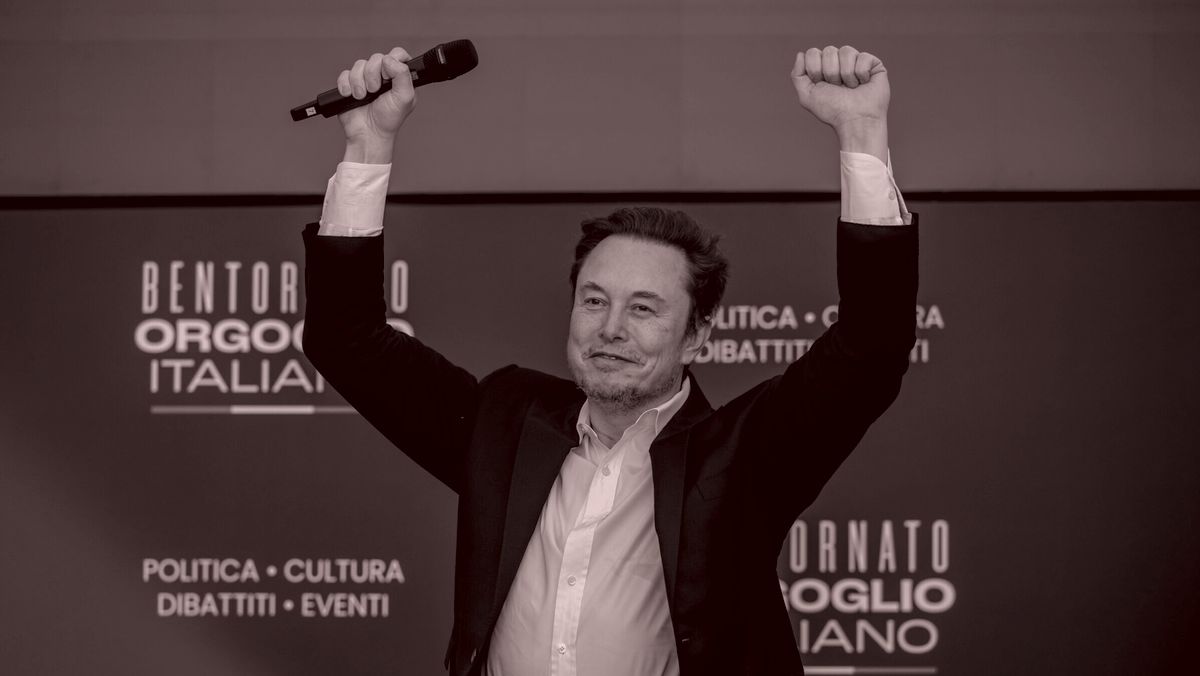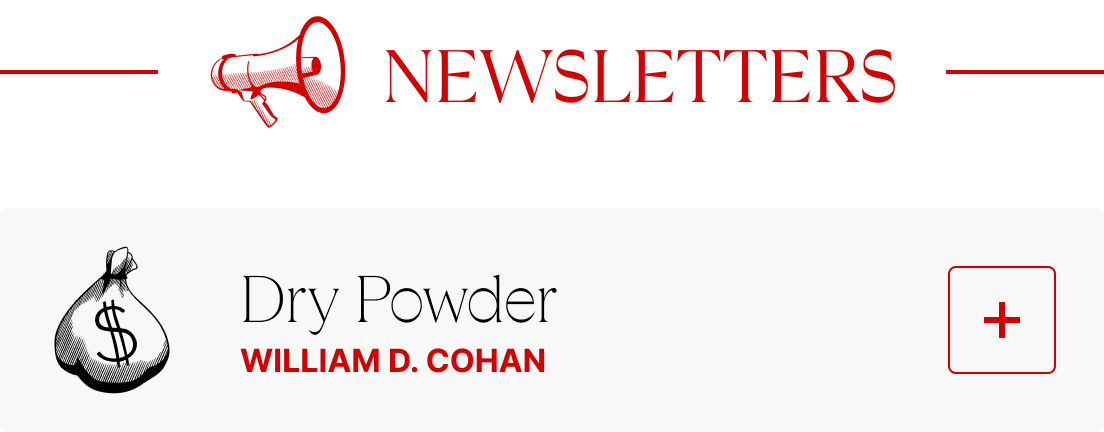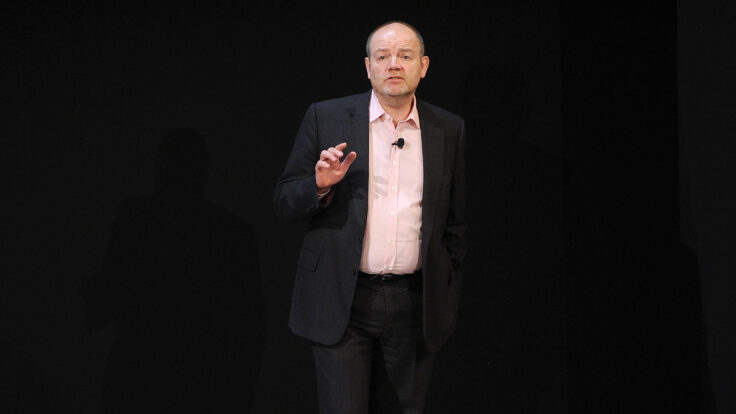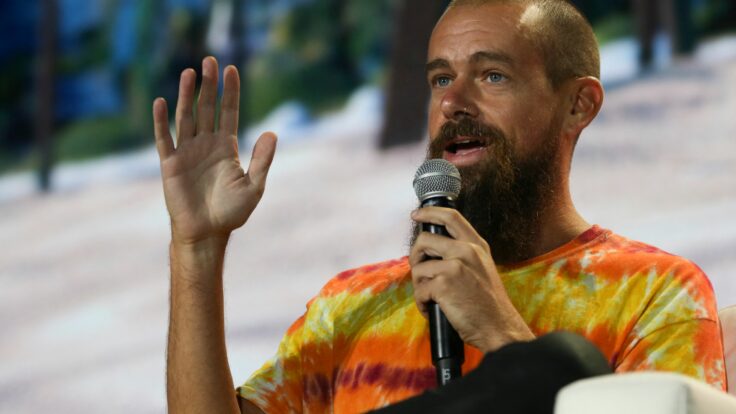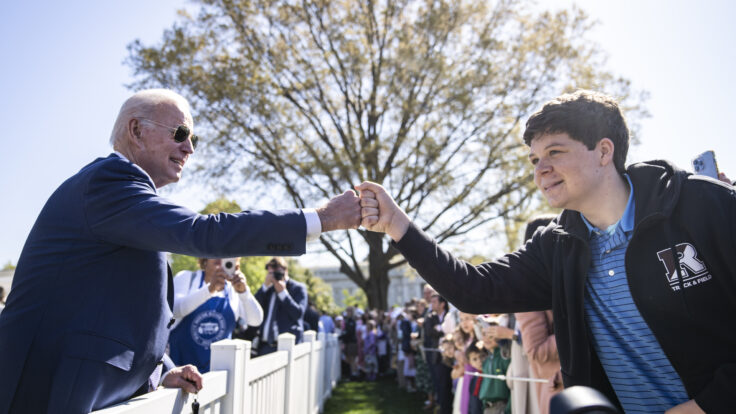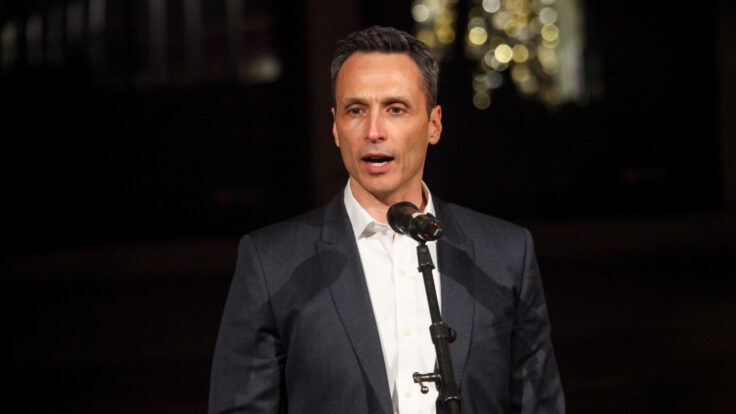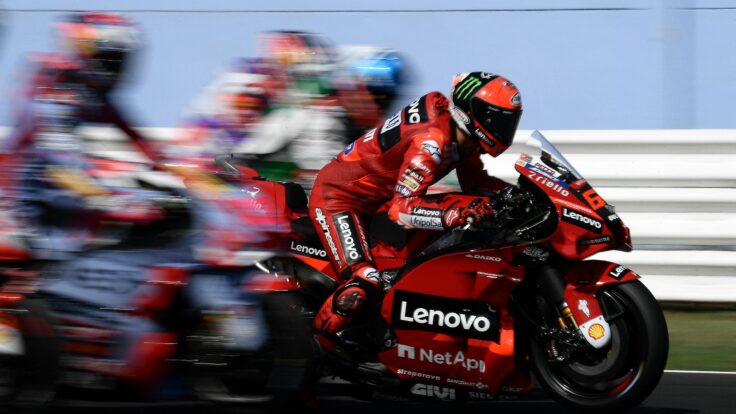Welcome back to The Best & The Brightest. I’m Abby
Livingston.
In tonight’s issue, we’ve got Bill Cohan on the surprise turnaround at Elon Musk’s X and Marion Maneker on the Trump-inflicted convulsions at the Kennedy Center. But first, a few notes on how Washington’s DOGE fight is playing in districts back home… and why the stampede of Democrats jumping into the race to
replace Minnesota’s Tina Smith in the Senate is a rare positive signal for a party in desperate need of good news.
Let’s dive in…
|
- In the DOGE house: Among the burning questions occupying Hill Democrats and Republicans alike is what sort of economic and electoral impact Musk’s indiscriminate DOGE cuts will have in their districts. The House is recessed this entire week, giving members their first real opportunity, since the scope of the Trump administration’s assault on the federal workforce became clear, to take the temperature of their constituents back home. Worries about
potential blowback from angry voters will be especially acute in the 15 or so Republican-held districts that Democrats hope to win back next year. We’re already starting to see gentle pushback from Republican incumbents in competitive districts and those with outsize numbers of federal workers. As The Wall Street Journal
noted this weekend, federal jobs are scattered throughout America’s 435 congressional districts—80 percent of them outside the D.M.V.
For Democrats, this week’s recess will test whether members are following minority leader Hakeem Jeffries’ marching orders to hold public events and identify constituents with compelling stories to
tell. This kind of outreach is not intuitive to all members, especially older ones, but given the scale of Democratic apoplexy over the DOGE cuts, anyone not proactively reaching out to constituents or working to channel their outrage is practically begging for a primary challenge. The atmosphere is reminiscent of early 2017, when rowdy town halls in response to Trump’s efforts to repeal Obamacare were harbingers of the following year’s blue wave. This week will give members—and by
extension, the rest of us—a better idea of how the first month of Trump 2.0 is playing politically, offline and outside the Beltway.
So far, senators have been relatively insulated from constituent feedback. They’ve also been preoccupied with confirming Trump’s cabinet nominees. But as Punchbowl reported this morning, a growing number of Republican
senators—Susan Collins, Lisa Murkowski, John Curtis, Katie Britt, and Bill Cassidy—are beginning to express concerns over constituents losing jobs and services. Meanwhile, as a Democratic source pointed out, Democrat Jon Ossoff’s grueling reelection campaign next year may have just gotten easier, given how significantly the C.D.C. layoffs over the weekend hit Georgia—handing
Ossoff the chance to berate Trump and Elon for dismembering the pride of Atlanta.
- The Minnesota Senate scramble: There’s another positive signal for the beleaguered Democratic Party, too: Everybody wants to run for Senate. Fourth-term Rep. Angie Craig is the latest Minnesotan to put her name into consideration for retiring Sen. Tina Smith’s Senate seat, alongside Gov. Tim Walz and Lt.
Gov. Peggy Flanagan. Craig’s public interest in the gig is particularly notable given her recent ascension to ranking member of the House Agriculture Committee, where she would become chair if Democrats regain the majority next year. Rep. Ilhan Omar is also considering a run at Smith’s seat, which could set up a
messy progressive versus establishment battle royale in the primary. My sense is that the primary is still fluid, with some Democrats waiting to see whether Walz will jump in or instead run for a third term as governor.
|
|
|
A MESSAGE FROM OUR SPONSOR
|
In America, farming isn’t just a profession; it’s a purpose. With 880 million acres of farmland
and more than 2 million people dedicated to producing our food in America, farmers are the backbone of our economy. In communities nationwide, Bayer employees work alongside farmers to bring cutting-edge innovations in breeding, crop protection, and technology to their fields. American farmers trust our tools because we have a purpose, too: helping farmers thrive.
Learn more at Go.Bayer.com/Purpose.
|
|
|
Now, here’s Marion on the Kennedy Center’s facelift…
|
|
|

|
Marion Maneker
|
|
Kennedy Center Conspiracies
|
It’s been a tough couple of weeks in Washington. The various
attacks on the way D.C. operates—thrilling to some, horrifying to others—have made President Trump’s decision to replace the board of the Kennedy Center with loyalists, and anoint himself as chair, seem more like comic relief than a consequential move. After all, the role, which billionaire Carlyle Group co-founder David Rubenstein held for more than a decade, requires deep pockets and generosity. Trump may or may not have the former, but he definitely isn’t
known for the latter.
Last year, the federal government only provided $45 million to the Kennedy Center, or less than 17 percent of its total funding. Another $95 million, or more than 35 percent of the budget, came from donations. That’s an amount Rubenstein, a relentless schmoozer and networker, could easily raise. But I don’t think anyone imagines that Donald Trump, in or out of office, would be
willing to do the same for this institution. And it’s not conceivable to think he would reach into his own pockets to make up the shortfall.
At first, the move seemed like just another pandering swipe at “elites” from a man who had The Village People perform at his inaugural. There’s no evidence that, given the choice, Trump would sit through any of the performances offered at the Kennedy Center.
Even the fact that the board firings were uncontested suggested that the “takeover” was only a stunt, until some fascinating context involving Trump’s first press secretary, Sean Spicer, was revealed in The Washington Post on Friday.
Indeed, not long into the Biden administration, Spicer
and top Trump advisor Stephen Miller launched a pyrrhic lawsuit over Spicer’s firing from the Naval Academy “board of visitors,” a case that ended up explicitly defining the sitting president’s right to dismiss and appoint members of boards like the one for the Kennedy Center. One might have left the whole episode there had the museum world not already begun worrying about the president’s fatwa against D.E.I. initiatives, which have become museum orthodoxy in recent
years. How exposed are they to the loss of federal grants or to further interference? And what, exactly, does it mean that the Trump administration considers D.E.I. programming to be “illegal”?
Continue reading online.
|
|
|
Finally, here’s Bill on the Wall Street–D.C. crossover surprise of the
year…
|
|
|
The first glimmers of hope are starting to emerge for Elon and his
$44 billion deal for X, which was once derided as one of the worst acquisitions since the financial crisis. With the debt now trading at or near par (!!), here’s a deconstruction of an entirely improbable turnaround.
|
|
|
It took more than two years, but some big Wall Street
banks—along with several of their European and Japanese counterparts—are finally breathing a sigh of relief now that nearly $9 billion of the $13 billion of X debt they’ve been holding on to is flying out the door. Incredibly, the debt is being priced close to par, which is surely assuaging the banks’ regulators and credit committees. Of course, this is quite a turnaround from the early days of Elon Musk’s $44 billion acquisition of the company, when he was busy firing
75 percent of Twitter’s employees and telling Bob Iger to go fuck himself, and advertisers were fleeing the social media platform in droves.
In the end, the banks’ stubbornness has miraculously paid off, as the first-lien X debt—that $9 billion—is finding new homes in the hands of eager buyers and away from the banks’ balance sheets. It’s an outcome I could not have predicted. According to the Financial Times, a group of investors
including Diameter Capital Partners, run by Scott Goodwin (the son of my former JPMorgan partner John Goodwin), bought about $1 billion face amount of the X debt in January, at a meaningful discount of about 90 cents on the dollar to generate around a 14 percent yield. That group is already in the money on the debt, now that it has traded up to around par. Lately, other buyers have had to pay more: A big chunk of the debt sold
for about 97 cents on the dollar in recent weeks, and another $3 billion or so is about to be sold for close to par, or without any discount at all. Morgan Stanley, for instance, is boosting its X debt offering to $4.7 billion, with no discount offered, because of high demand.
|
|
|
A MESSAGE FROM OUR SPONSOR
|
The heartbeat of American agriculture can be heard at every farmer’s market and dinner table,
spanning 880 million acres, supported by over 2 million people, and contributing $1.5 trillion to our economy.
Thousands of Bayer employees work alongside American farmers, providing access to innovations and support to implement them effectively. Bayer’s advanced breeding, crop protection, and digital technology tools are reshaping the future of farming, and we’re invested in every field, acre, and
harvest. We share the same purpose as American farmers: helping agriculture thrive so we can bring high-quality, abundant, and diverse food to millions. Learn more at Go.Bayer.com/Purpose.
|
|
|
How the heck was this surprise turnaround engineered? That question has been
vexing me for months. In the first 18 months or so after the deal closed, the consensus on Wall Street was that the $31 billion of equity that Elon and his friends invested in the buyout—$24 billion of which came from Elon himself—was a lost cause. The only question left was how badly the seven banks that provided the remaining $13 billion, in the form of two tranches of debt, would get burned when they sold it off their balance sheets, as they’re pretty much required to do by regulators. There
was little hope for much more than 50 to 60 cents on the dollar, even as X was somehow keeping current on its annual $1.4 billion in interest payments. But I think I’ve finally gotten to the bottom of how it happened, and why the selling banks are now dancing a jig.
|
Some of the buyers attribute at least part of the
turnaround, improbably, to Linda Yaccarino, whom Elon hired away from NBCU in May 2023 to become X’s C.E.O. Since then, she has unveiled a number of subscription-based products that seem to be working. She has also, somehow, managed to lure advertisers back to the platform. (Though she has certainly benefited from the fact that few companies want to pick a fight with Musk these days, given his ubiquity, including in the White House.) Meanwhile, X is also benefiting from Meta’s
removal of many controls on its social media platforms, too, offering advertisers a similarly brand-unsafe experience. Direct X competitors Threads and Bluesky haven’t quite cracked the code. TikTok has its own existential crisis, obviously. So there aren’t many better options.
I’ve heard from someone directly involved in the debt transactions that no less than 99 percent of the
advertisers have returned (perhaps this person was being hyperbolic; there are still a lot of nutty advertisements in my feed), and that there are now more than 3 million paid “premium” subscribers on top of X’s 220 million or so daily users. December 2024 revenue, I’m told, was up 40 percent from the same period the previous year, with advertising revenue up 32 percent year over year and the balance of the increase coming from paid premium subscriptions.
Linda, it seems, is actually doing a pretty good job—and appears to have evolved since that awful blink-twice Kara Swisher interview from back in the day. “I think she’s excellent,” one source who met with her recently told me. “I was impressed.” Didn’t see that coming either. I’m also told that Elon has put another
$200 million into X since the deal closed to fund “cash burn,” which is apparently less than expected after his initial equity investment of $24 billion went up in smoke.
What’s more, the company’s EBITDA was $1.4 billion last year—just enough to cover X’s annual interest payments without help from Elon, or so I’m told. (In 2021, before the company was sold, Twitter had EBITDA of $1.47 billion… but also twice as many employees.) There was no free
cash flow—EBITDA after interest expense—in 2024, but the expectation is that EBITDA in 2025 will be $1.6 billion, and free cash flow is expected to be around $200 million this year. These days, my Wall Street sources value X at around 10 times the 2024 EBITDA of $1.4 billion, or $14 billion—still a far cry from $44 billion, obviously, but a step in the right direction. (I tried to contact Dave Heinzinger, the new head of communications at X, to check on these numbers, but alas, he could not be
reached for comment.)
There’s more to the enterprise value story. The X factor, pun intended, is the company’s roughly 12 percent stake in xAI, Elon’s for-profit artificial intelligence business that manifests as Grok on X. The A.I. company used X’s computers, engineers, and Nvidia chips “to incubate” the business, I’m told. In return, Elon rewarded X with a 25 percent stake in xAI, which has since been diluted down to around 12 percent. Given xAI’s recent
valuation of $50 billion, X’s 12 percent stake is now valued at $6 billion. In addition, xAI is being trained on all the data being generated on X, and is paying the company $200 million a year in exchange for it.
The combination of the $14 billion valuation for X, plus its $6 billion stake in xAI, results in a $20 billion enterprise valuation for X, before any additional value given for the fact that Elon is able, and apparently willing, to backstop any cash shortfalls as needed. It
hardly needs to be said, but there is undeniable value to the world’s richest man being the company’s largest owner.
|
“Circular Accounting
Nonsense”
|
All at once, it seems, the puzzle pieces have come together, benefiting the big banks
and assuring buyers that the $9 billion of X first-lien paper is money-good. “Everything is moving in the right direction,” one Wall Street source told me. From a loan-to-value perspective, which is how buyers look at these opportunities, you’ve got a first-lien loan of $9 billion and a value of $20 billion, just accounting for X and its stake in xAI: a 45 percent loan-to-value ratio, giving investors all the comfort they’d ever need to buy this paper at or close to par.
|
|
|
That translates to good news for Morgan Stanley, Bank of
America, Barclays, Mizuho, MUFG, Société Générale, and BNP Paribas, who can now move this debt off their balance sheets and make room for the next round of leveraged loans. There’s still the $4 billion of junior X debt that will likely remain on their balance sheets for the time being. But they might as well wait and see what happens at this point, right?
As for the $31 billion of equity, things seem to be
looking up on that front, too, albeit slowly. Using the $20 billion enterprise valuation, that would mean the X equity is now worth around $7 billion (after subtracting the $13 billion of debt at par), or 77.5 percent less than the original $31 billion of equity invested. That pretty much squares with the price that one Fidelity fund with a $19.7 million stake in X valued its position as in November: $5.8 million, a decrease of 71 percent from the original value of the investment, but up from a
valuation of $5.5 million in October.
Of course, there are at least a few skeptics of this suddenly rosy scenario. On Bluesky, Kara Swisher referred to the payments from xAI to X for its data as “circular accounting nonsense.” Another source claimed that Elon “just moved money from one pocket to the other, to make it look profitable so he could sell the debt,” and that user growth is “stagnant,” revenue is
“horrible,” and Linda is “a clown.” Is this skepticism or schadenfreude? I haven’t a clue. But the debt is moving, and at prices that would’ve seemed implausible six months ago. Regardless of how Elon did it, the debt syndication clearly seems to have worked out for the banks, and for some of the first wave of investors who bought that debt.
We’re still far from a payday for Elon’s fellow equity investors, such as a16z, Larry
Ellison, and the Saudi billionaire Prince Alwaleed. But between the sale of a majority of the debt for nearly par, the A.I. valuation euphoria, the increasing EBITDA, and the ongoing Elon-Trump bromance (like other media companies, X recently settled its lawsuit with Trump for booting him off the platform, pre-Elon, because of January 6), the first glimmers of hope in more than two years are starting to emerge for this deal, once considered one
of the worst made after the 2008 financial crisis. I have to admit, I didn’t see that coming.
|
|
|
Join Emmy Award-winning journalist Peter Hamby, along with the team of expert journalists at Puck, as they let you
in on the real conversations insiders are having across the four corners of power in America: Wall Street, Washington, Silicon Valley and Hollywood. Puck’s contributors will bring you smart conversation around the inside stories happening in these worlds. Presented in partnership with Audacy, new episodes publish daily, Monday-Friday.
|
|
|
Unique and privileged insight into the private conversation going on inside Wall Street, as told by the
best-selling journalist and former M&A banker.
|
|
|
Need help? Review our FAQ page or contact us for assistance. For brand partnerships, email ads@puck.news.
You received this email because you signed up to receive emails from Puck, or as part of your Puck account associated with . To stop receiving this newsletter and/or manage all your email preferences, click
here.
|
Puck is published by Heat Media LLC. 107 Greenwich St, New York, NY 10006
|
|
|
|




